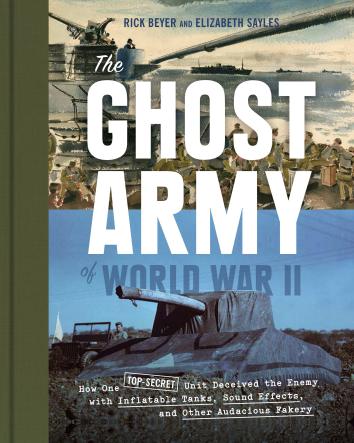These Artists Helped Win World War II With Inflatable Rubber Tanks and Fake Artillery
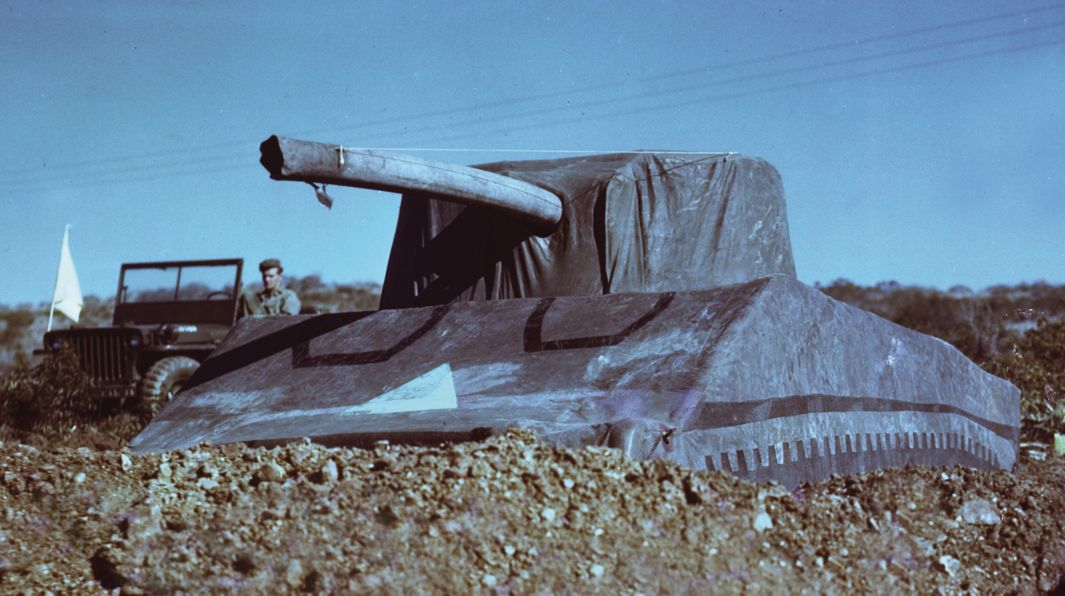
Courtesy of the National Archives/Princeton Architectural Press
Roman Mars’ podcast 99% Invisible covers design questions large and small, from his fascination with rebar to the history of slot machines to the great Los Angeles Red Car conspiracy. Here at The Eye, we cross-post new episodes and host excerpts from the 99% Invisible blog, which offers complementary visuals for each episode.
This week's edition—about the new book The Ghost Army of World War II—can be played below. Or keep reading to learn more.
During World War II, a massive recruitment effort targeted students from the top art schools across the country. These young designers, artists, and makers were being asked to help execute a wild idea that came out of one the nation’s most conservative organizations: the United States Army.
The crazy idea was this: The Army would design a “deception unit,” a unit that would appear to the enemy as a large armored division with tanks, trucks, artillery, and thousands of soldiers. But this unit would actually be equipped only with fake tanks, fake trucks, fake artillery, and manned by just a handful of soldiers.
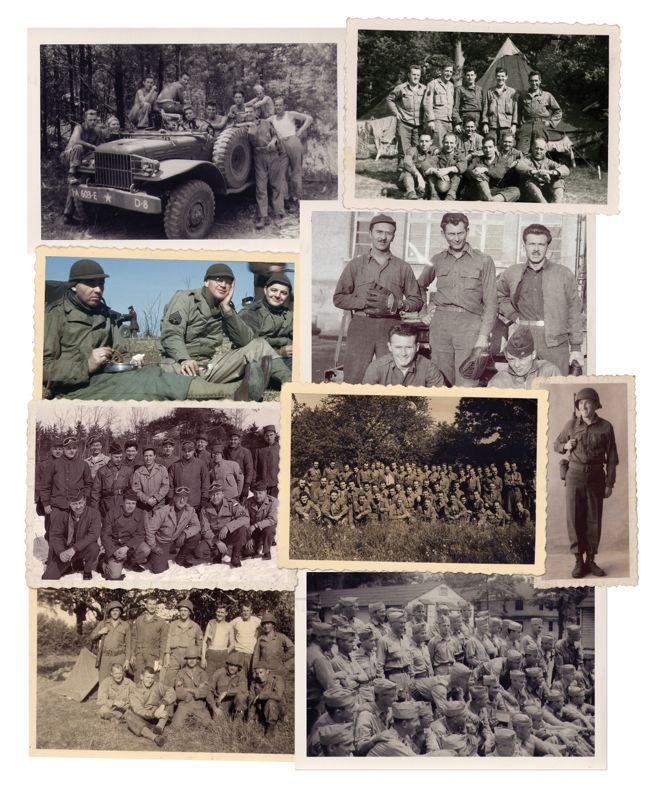
Photos courtesy of William Sayles, Dick Syracuse, Nathaniel Dahl, Jack McGlynn, and Bob Boyajian/Princeton Architectural Press
June 6, 1944, marked the start of the most critical period of World War II. The Allies landed on the beaches of Normandy and began to liberate France from Germany, which had occupied it for four years. The success of D-Day was due, in part, to deception. Using a variety of techniques, the Allies were able to trick the Germans into thinking the invasion would happen at a different time and place.
Then, a couple of U.S. Army men stepped in with an idea. Ralph Ingersoll and Billy Harris, who had learned some deception techniques from the British, wanted to take deception to a whole new level. They wanted to create a mobile deception unit. The Army created a top-secret unit officially called the “23rd Headquarters Special Troops.” After the war, it was nicknamed the “Ghost Army.” The so-called Ghost Army would impersonate a specific larger division, such as the 6th Armored Division, which had 15,000 to 20,000 soldiers. Only about 1,000 soldiers constituted the Ghost Army.
To pull off this deception, the Ghost Army used tanks, Jeeps, and artillery all made from inflatable rubber. For the charade to be believable, soldiers in the Ghost Army had to pay extreme attention to detail. An inflatable tank might look real enough on the ground from a distance, but aerial reconnaissance could reveal a conspicuous lack of tank tracks. So the Ghost Army would use a bulldozer to make fake tracks around the fake tanks. There was one cardinal rule about working with inflatables: never carry one across a road, or in any other place where you could be seen. Obviously, two men carrying a 40-ton tank would be a dead giveaway.
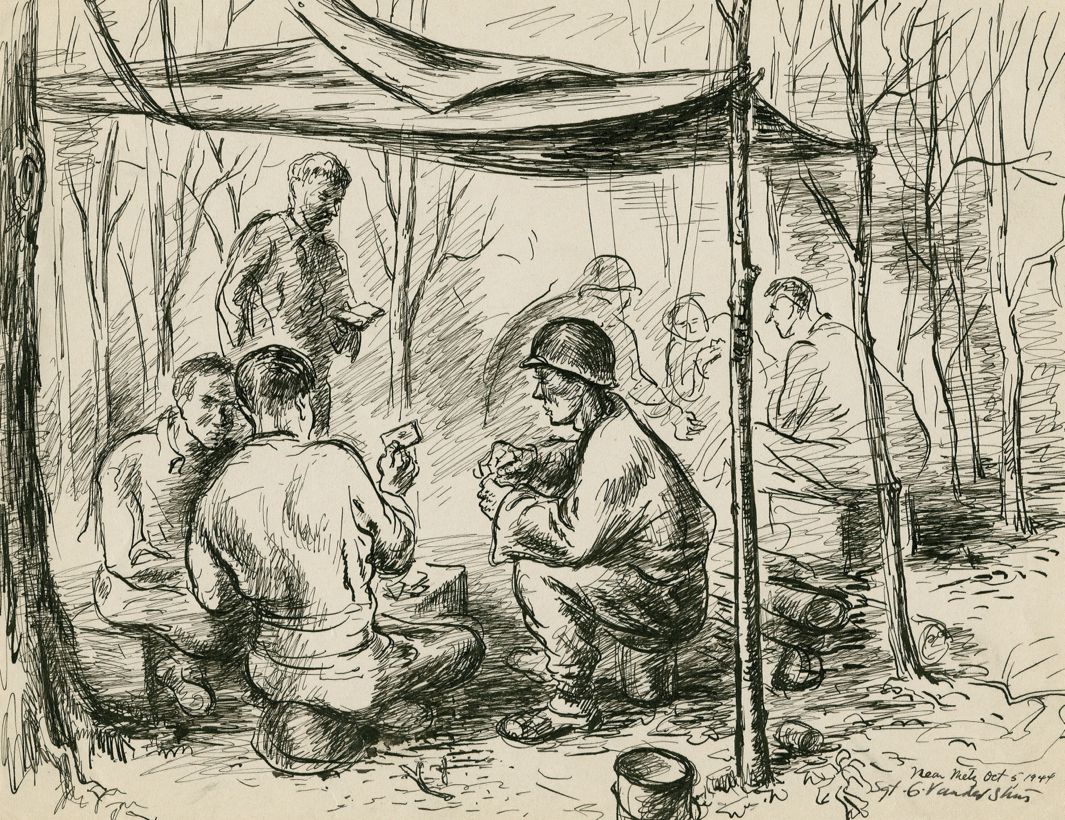
Sketch by Jeff Vander Sluis
When they weren’t busy with their dummy tanks, the artists in the Ghost Army spent their time sketching each other as well as local people and architecture. Some of the artists in the Ghost Army went on to be quite successful: Ellsworth Kelly, minimalist sculptor and painter; Bill Blass, the fashion designer; and Jack Masey, a designer who has worked on numerous world expositions and museums.
During their travels through Europe, when they weren’t sketching, the Ghost Army was often acting—literally impersonating whichever unit they imitating at the time. They made fake patches to put on their sleeves and stenciled fake unit numbers on their trucks. While passing through local towns the ghost army would put on a show for any German spies that might still be lingering in French cafés or bars.
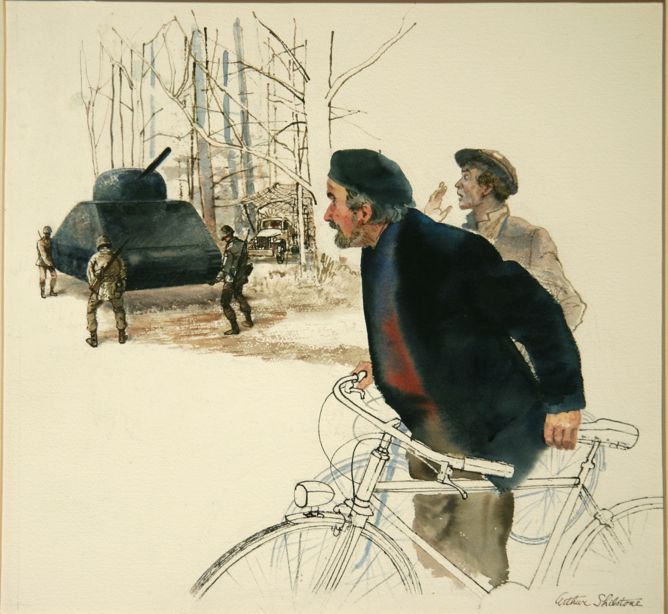
Courtesy of Arthur Shilstone
On the battlefield, the Ghost Army also did “sonic deception.” The sonic deception unit would record the sounds of troops amassing in tanks and trucks and then be able to play those sounds back over loud speakers. The Ghost Army had a library of recordings of different engines moving over different terrain. Sonic deception was so new to the Army that they made a top-secret film (screened for a chosen few) to explain how it worked.
The third component of the Ghost Army was the radio operators. It was well known that the Germans listened in on radio communications of Allied troops, so if the Ghost Army was trying to impersonate a real armored division, they’d have to send the right kinds of transmissions. The radio operators had to be perfect mimics. They had to learn the exact keystrokes of an individual Morse code operator in the unit they were impersonating.
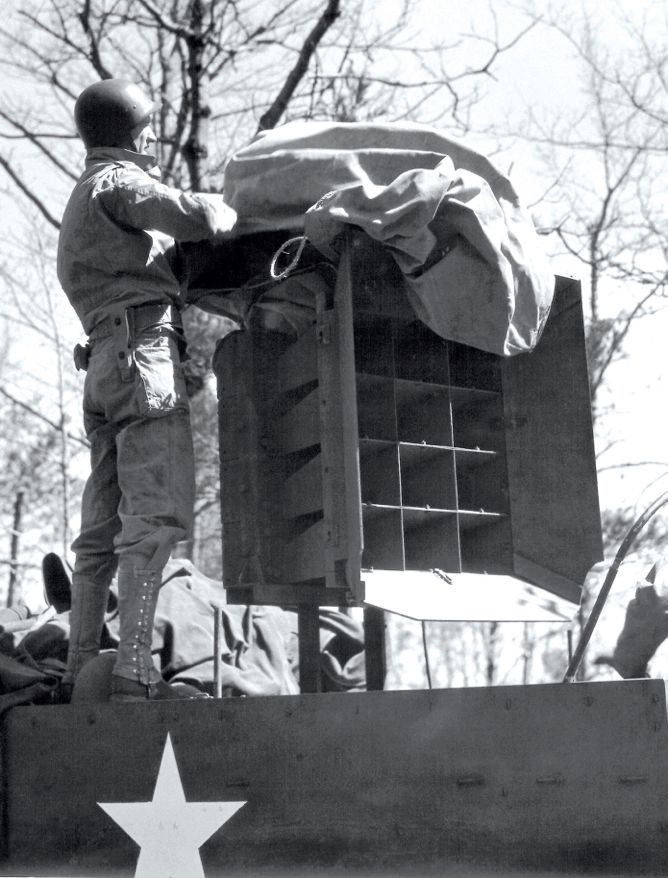
Courtesy of the National Archives/Princeton Architectural Press
The three different units in the Ghost Army—visual, sonic, and radio—were operating separately but were organized by the same people and were working on different components of the same plan.
The Ghost Army carried out 21 deception missions between June 1944 and March 1945—nearly the entire time the U.S. Army was operating in Europe. One of these was Operation Bettembourg, in which the Ghost Army filled a 75-mile gap in the American line of troops for seven days, until an actual armored division could come in and take its place.
Over the course of the war, the Ghost Army lost three soldiers and had several dozen wounded, but overall it was one of the safer assignments of World War II. And in the end, the crazy idea of a “mobile deception unit” worked. It fooled the Axis powers, it held the line, and it saved lives.
To learn more, check out the 99% Invisible post or listen to the show.

